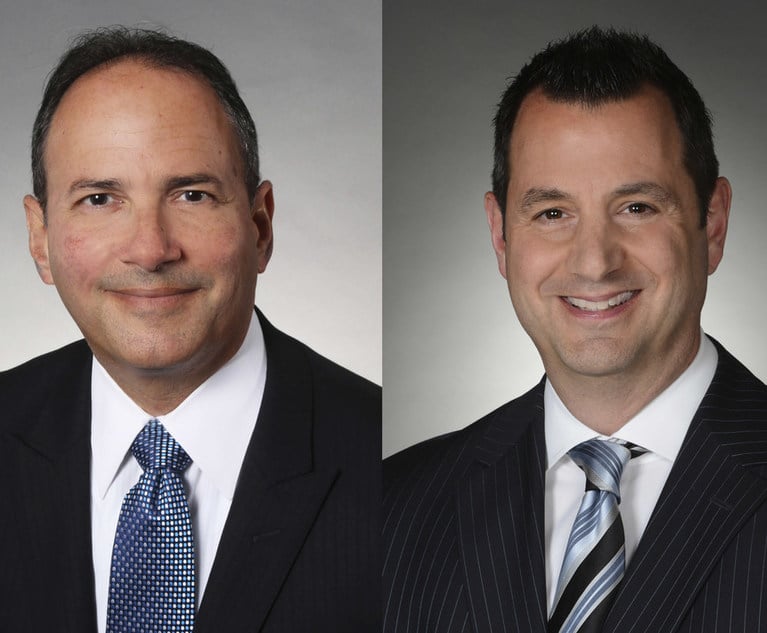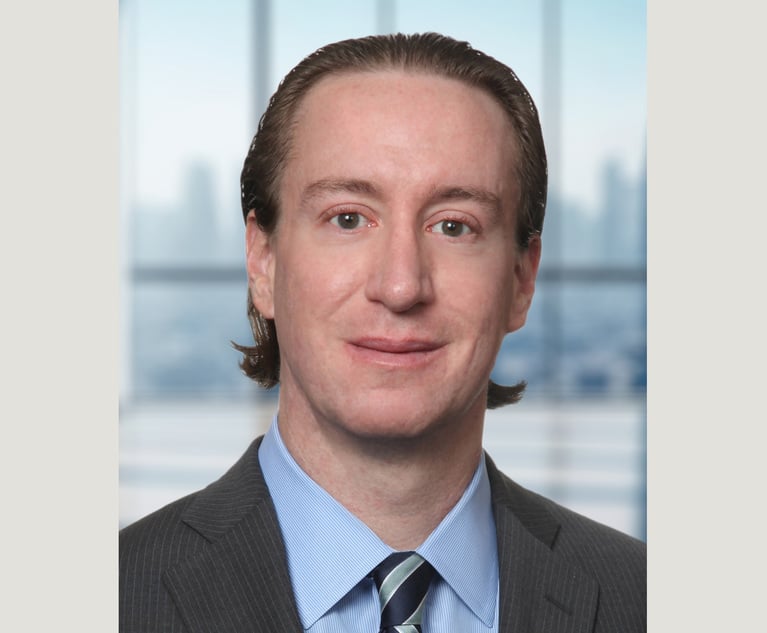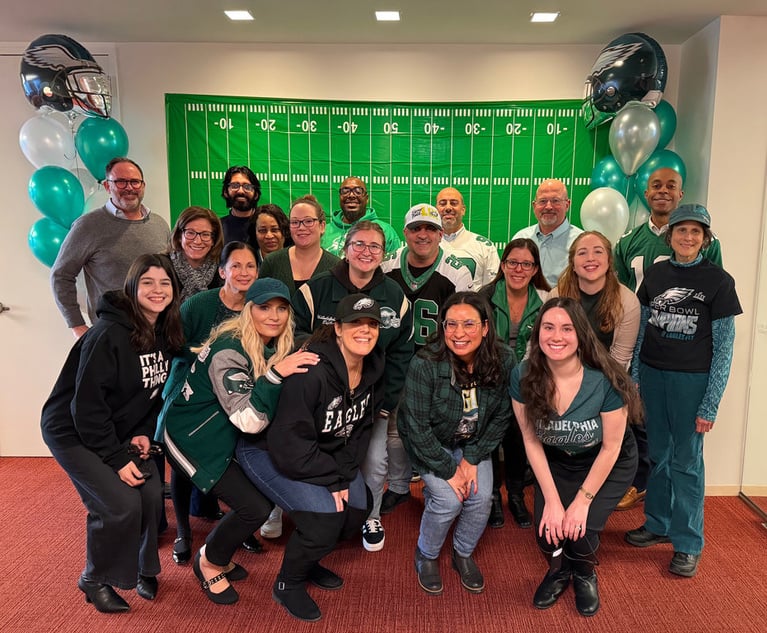Law Firms Are Collaborating With the Competition to Maximize Pro Bono Impact
"As firms have gotten more sophisticated about pro bono, they have asked the question, 'How can we make the most impact?'" Legal Services Corp. president Ronald Flagg says.
July 06, 2020 at 05:00 AM
4 minute read
 Credit: REDPIXEL.PL/Shutterstock
Credit: REDPIXEL.PL/Shutterstock
Not long ago, law firm pro bono operated on a case-by-case basis. A client in need found a lawyer or firm to offer its time, and together they sought justice. Individual crises, though, are often symptoms of systemic failures, and in recent years law firms have begun collaborating in an effort to address both.
"As firms have gotten more sophisticated about pro bono, they have asked the question, 'How can we make the most impact?'" Ronald Flagg, Legal Services Corp. president and former pro bono counsel at Sidley Austin, says. "Traditionally, the measurement of their impact was solely in output."
But now, rather than focusing on pro bono hours and cases handled, firms are targeting broader issues they can address, and partnering with their competition to do so.
Flagg notes several examples of firms teaming up in recent years, including "triage projects" in Richmond, Virginia, and Charlotte, North Carolina, which identified low-income residents' unmet needs in a dozen different areas of the law, appointed a leader for each area and tasked them with recruiting attorneys to help. He also points to adopt-a-neighborhood programs in Kansas City and St. Louis, Missouri, focused on redeveloping communities, as well as a comprehensive effort in Minneapolis to address the needs of individuals reentering society from prison. In each case, multiple Am Law 200 firms joined with in-house departments and legal aid organizations to maximize their impact.
The shift toward more deeply analyzing pro bono involvement began with in-house departments, Flagg says, as they began to apply to pro bono work the same data-driven approach they applied to hiring outside counsel. Firms, in turn, began to think more strategically. "It's a hopeful sign," Flagg says. "At the end of the day, what you want out of pro bono work is positive changes in clients' lives."
For his part, Steven Schulman, pro bono leader at Akin Gump Strauss Hauer & Feld and co-president of the Association of Pro Bono Counsel, identifies the wave of women and unaccompanied children coming from Central America in 2014 as a turning point in getting firms to organize together, as well as a small-business relief alliance formed after Superstorm Sandy hit New Jersey and New York in 2012.
Emily Goldberg, pro bono counsel at Paul, Weiss, Rifkind, Wharton & Garrison, says she's seen "a 360-degree amount of need" over the past few years that surpasses anything she's seen before. She points to President Donald Trump's 2017 travel ban as "the first wakeup call" that rallied firms together. Paul Weiss chairman Brad Karp says the Trump administration has fueled firms to band together.
"The challenges that we're all confronting nowadays under the current administration are so enormous, the scope is so large, the issues are so breathtaking, the stakes are so high that it oftentimes is impossible for any single law firm, no matter how well-resourced or how well-intentioned, to mount a battle of the magnitude that is necessary to redress the wrong at issue," Karp says.
He also recently called on firms to band together to address racial injustice in the United States in the wake of the alleged murder of George Floyd by a Minneapolis police officer.
The Association of Pro Bono Counsel has been a catalyst in the effort to unite firms and their pro bono leaders, regardless of the wrong they seek to redress, and Goldberg and her counterparts across the industry are learning quickly how to marshal their resources.
"It's become a skillset in and of itself: how to build a project and scale it up so you're not just helping 10 people, you're thinking bigger," Goldberg says. "How can I help a thousand people?"
This content has been archived. It is available through our partners, LexisNexis® and Bloomberg Law.
To view this content, please continue to their sites.
Not a Lexis Subscriber?
Subscribe Now
Not a Bloomberg Law Subscriber?
Subscribe Now
NOT FOR REPRINT
© 2025 ALM Global, LLC, All Rights Reserved. Request academic re-use from www.copyright.com. All other uses, submit a request to [email protected]. For more information visit Asset & Logo Licensing.
You Might Like
View All
Saul Ewing Loses Two Partners to Fox Rothschild, Marking Four Fla. Partner Exits in Last 13 Months
3 minute read
Dentons Taps D.C. Capital Markets Attorney for New US Managing Partner

Exceptional Growth Becoming the Rule? Demand Drove Strong Year for Big Law

Eagles or Chiefs? At These Law Firms, Super Bowl Sunday Gets Complicated
3 minute readLaw Firms Mentioned
Trending Stories
- 1Parties’ Reservation of Rights Defeats Attempt to Enforce Settlement in Principle
- 2ACC CLO Survey Waves Warning Flags for Boards
- 3States Accuse Trump of Thwarting Court's Funding Restoration Order
- 4Microsoft Becomes Latest Tech Company to Face Claims of Stealing Marketing Commissions From Influencers
- 5Coral Gables Attorney Busted for Stalking Lawyer
Who Got The Work
J. Brugh Lower of Gibbons has entered an appearance for industrial equipment supplier Devco Corporation in a pending trademark infringement lawsuit. The suit, accusing the defendant of selling knock-off Graco products, was filed Dec. 18 in New Jersey District Court by Rivkin Radler on behalf of Graco Inc. and Graco Minnesota. The case, assigned to U.S. District Judge Zahid N. Quraishi, is 3:24-cv-11294, Graco Inc. et al v. Devco Corporation.
Who Got The Work
Rebecca Maller-Stein and Kent A. Yalowitz of Arnold & Porter Kaye Scholer have entered their appearances for Hanaco Venture Capital and its executives, Lior Prosor and David Frankel, in a pending securities lawsuit. The action, filed on Dec. 24 in New York Southern District Court by Zell, Aron & Co. on behalf of Goldeneye Advisors, accuses the defendants of negligently and fraudulently managing the plaintiff's $1 million investment. The case, assigned to U.S. District Judge Vernon S. Broderick, is 1:24-cv-09918, Goldeneye Advisors, LLC v. Hanaco Venture Capital, Ltd. et al.
Who Got The Work
Attorneys from A&O Shearman has stepped in as defense counsel for Toronto-Dominion Bank and other defendants in a pending securities class action. The suit, filed Dec. 11 in New York Southern District Court by Bleichmar Fonti & Auld, accuses the defendants of concealing the bank's 'pervasive' deficiencies in regards to its compliance with the Bank Secrecy Act and the quality of its anti-money laundering controls. The case, assigned to U.S. District Judge Arun Subramanian, is 1:24-cv-09445, Gonzalez v. The Toronto-Dominion Bank et al.
Who Got The Work
Crown Castle International, a Pennsylvania company providing shared communications infrastructure, has turned to Luke D. Wolf of Gordon Rees Scully Mansukhani to fend off a pending breach-of-contract lawsuit. The court action, filed Nov. 25 in Michigan Eastern District Court by Hooper Hathaway PC on behalf of The Town Residences LLC, accuses Crown Castle of failing to transfer approximately $30,000 in utility payments from T-Mobile in breach of a roof-top lease and assignment agreement. The case, assigned to U.S. District Judge Susan K. Declercq, is 2:24-cv-13131, The Town Residences LLC v. T-Mobile US, Inc. et al.
Who Got The Work
Wilfred P. Coronato and Daniel M. Schwartz of McCarter & English have stepped in as defense counsel to Electrolux Home Products Inc. in a pending product liability lawsuit. The court action, filed Nov. 26 in New York Eastern District Court by Poulos Lopiccolo PC and Nagel Rice LLP on behalf of David Stern, alleges that the defendant's refrigerators’ drawers and shelving repeatedly break and fall apart within months after purchase. The case, assigned to U.S. District Judge Joan M. Azrack, is 2:24-cv-08204, Stern v. Electrolux Home Products, Inc.
Featured Firms
Law Offices of Gary Martin Hays & Associates, P.C.
(470) 294-1674
Law Offices of Mark E. Salomone
(857) 444-6468
Smith & Hassler
(713) 739-1250










